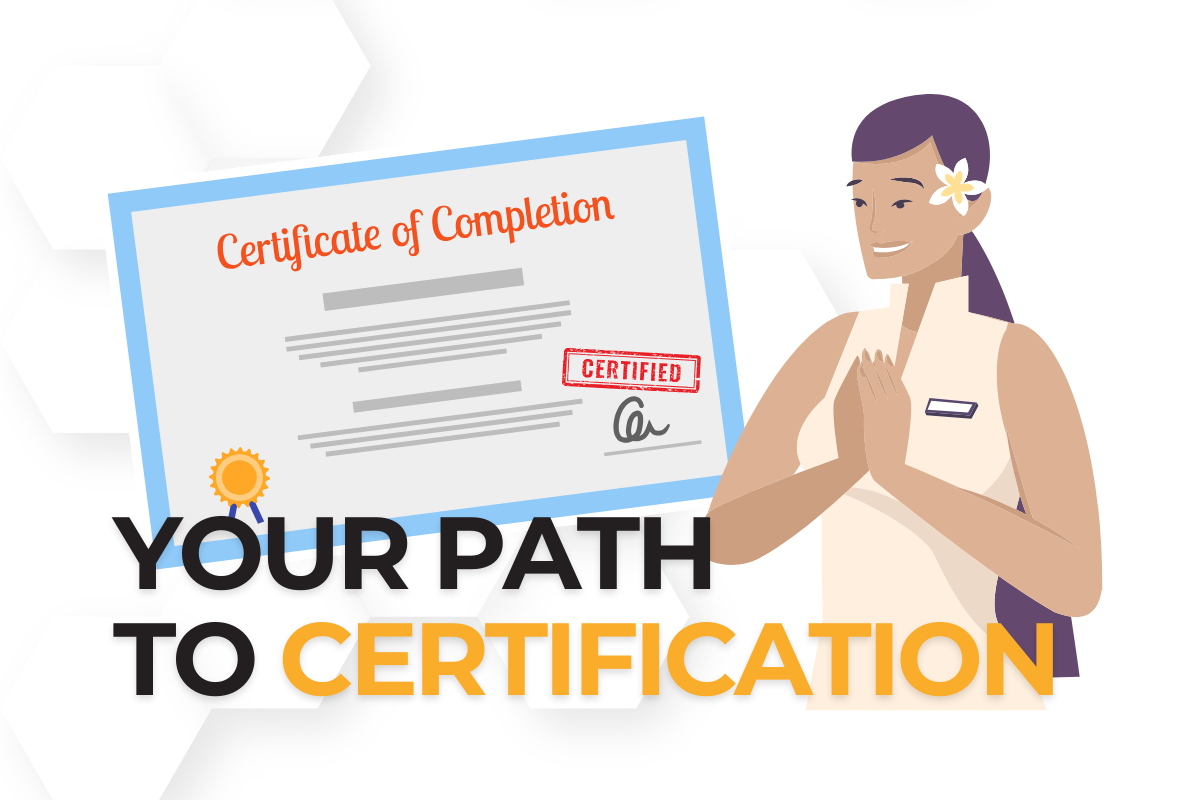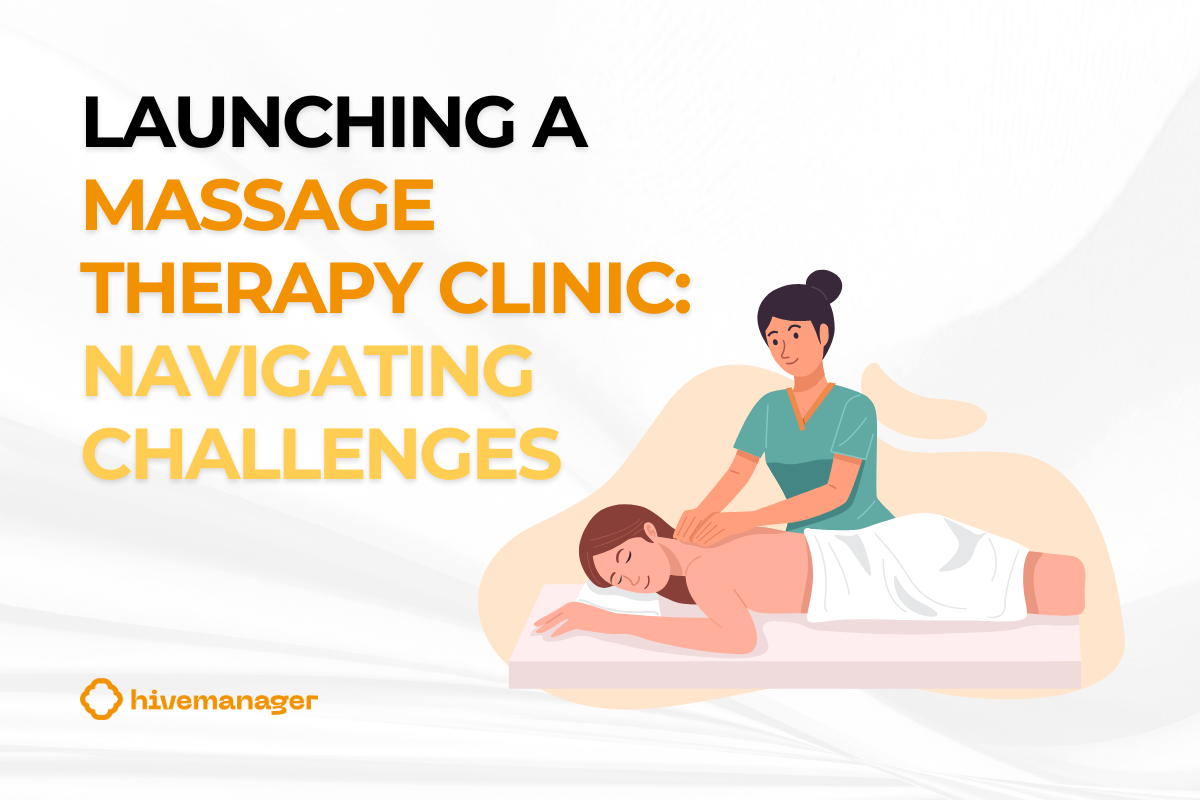Are you passionate about healing through touch and ready to pursue a career in massage therapy? California, with its diverse population and strong demand for wellness services, offers countless opportunities for massage therapists. Whether you’re dreaming of working in luxurious spas, wellness centers, or starting your own private practice, the potential for growth and success in this field is immense. However, before you can start practicing, there are essential steps you’ll need to take—and the process of becoming licensed can initially feel overwhelming.
Navigating complex licensing requirements, selecting the right school, and securing funding for your education can leave you unsure about where to begin. You may also wonder how to choose a specialization or how long the entire process will take. But don’t worry—we’ve simplified everything for you.
Whether you’re looking for practical tips on meeting California’s certification standards or insights into launching a successful massage therapy career, this guide covers every crucial aspect. By the end of this article, you’ll have a clear understanding of what’s required, how to make informed decisions along the way, and what steps to take to transform your passion into a fulfilling, lucrative career. Let’s dive into your pathway to success in the massage therapy industry!
Understanding California’s Massage Therapy Licensing Requirements
Navigating the CAMTC Licensing Process
In California, becoming a licensed massage therapist is regulated by the California Massage Therapy Council (CAMTC). The CAMTC ensures that all massage therapists meet specific educational and professional standards, maintaining high-quality services across the state.
Key Requirements:
- Education: A minimum of 500 hours from a CAMTC-approved school.
- Background Check: A criminal background check is required to ensure the safety and integrity of the profession.
- Application Fee: The application fee for certification is around $200, and you may need to renew your license every two years.
By meeting these standards, you’ll be eligible to legally practice massage therapy throughout California. Start the process by visiting the official CAMTC website to find detailed instructions and resources.
Choosing the Right Massage Therapy School in California

How to Find CAMTC-Approved Schools
Selecting the right school is one of the most important decisions you’ll make on your path to becoming a successful massage therapist. California boasts a wide range of CAMTC-approved schools, but finding the one that aligns with your goals, learning style, and budget can make all the difference in your educational journey and career prospects.
t’s not just about meeting the state’s licensing requirements—it’s about setting yourself up for long-term success.
Key Factors to Consider:
- Accreditation: Ensure the school is approved by the California Massage Therapy Council (CAMTC). This accreditation is crucial because it guarantees that your education will meet the state’s licensing requirements. Without it, you may face obstacles in getting certified or even finding employment.
- Curriculum: Evaluate the courses offered carefully. A quality program should cover core massage techniques along with anatomy, physiology, pathology, and ethics. Many schools also provide specialized training in areas like sports, prenatal, or deep tissue massage, helping you stand out in the job market.
- Hands-on Training: Practical experience is key to becoming a skilled therapist. Look for schools that offer extensive hands-on training, both in-class and through clinical internships. This real-world experience will build your confidence and competency in working with clients.
- Job Placement Rates: A great education should lead to a great career. Ask about the school’s job placement support and graduate success rates. Schools with high placement rates often have strong relationships with local employers, which can make it easier for you to find work after graduation.
Additional Considerations:
- Location and Flexibility: If you’re juggling work or family obligations, the location and class schedules can play a significant role in your decision. Some schools offer part-time, evening, or weekend classes to accommodate students with busy lives.
- Financial Aid and Scholarships: Education costs can add up, so be sure to inquire about available financial aid, scholarships, or payment plans. Some schools also offer tuition discounts for early enrollment or referrals.
Pro Tip:
Whenever possible, visit schools in person to get a feel for the environment. Speak with current students and alumni to hear their firsthand experiences—this can provide valuable insight that brochures and websites may not offer. Pay attention to the overall atmosphere: is it a place where you feel comfortable and inspired to learn?
By carefully weighing these factors and doing your research, you’ll be able to find a school that not only meets licensing requirements but also supports your long-term career goals.
Funding Your Massage Therapy Education
Exploring Financial Aid and Scholarships for Massage Therapy Students
Massage therapy education can be a significant investment, but there are various financial aid options available to help you manage the cost.
Financial Aid Options:
- Grants and Scholarships: Apply for federal or state grants through FAFSA. Look for massage therapy-specific scholarships to help reduce tuition costs.
- Loans: Federal student loans are available, but be mindful of repayment terms.
- Payment Plans: Some schools offer payment plans, allowing you to spread out the cost over time.
By planning ahead and exploring all your financial options, you can minimize the financial burden of your education and focus on your training.
Specializing in Massage Therapy: Finding Your Niche
How to Choose the Right Specialization in Massage Therapy
Once you’ve completed your foundational training, you might consider specializing in a particular type of massage therapy. Specializations can increase your earning potential and allow you to focus on areas of personal interest.
Popular Specializations:
- Sports Massage: Ideal for working with athletes or active individuals.
- Prenatal Massage: Focused on the specific needs of pregnant clients.
- Deep Tissue Massage: Perfect for clients seeking relief from chronic muscle pain.
Take the time to research the demand for various specializations in your area and align your choice with market needs and your passion.
Launching Your Massage Therapy Career in California

From Certification to Your First Job: What You Need to Know
You’ve completed your education and obtained your certification—now what? Whether you want to work for an established clinic or start your own practice, the transition into the workforce requires some preparation.
Job Hunting Tips:
- Network: Join professional organizations like the American Massage Therapy Association (AMTA) to connect with peers and potential employers.
- Use Job Boards: Explore online job boards specializing in massage therapy, such as those provided by AMTA.
- Leverage Your School: Many massage therapy schools have strong networks and partnerships with local clinics. Use your school’s resources to find job placements.
For those considering opening their own practice, ensure that you obtain the necessary business licenses and liability insurance to operate legally and safely.
Legal and Business Considerations for Massage Therapists
Understanding Business Basics for Massage Therapists
If you plan to start your own practice, there are several legal and business elements you need to address to ensure a successful launch.
Key Considerations:
- Business License: Check with your local government to determine what licenses or permits are needed to open a massage therapy business.
- Liability Insurance: Massage therapy can pose risks to clients, so securing professional liability insurance is essential.
- Client Management Tools: Invest in software to help manage appointments, payments, and client records, ensuring a smooth and professional client experience.
By covering these bases, you’ll be able to focus on providing excellent service to your clients without worrying about legal pitfalls.
Your Journey Starts Here
Becoming a licensed massage therapist in California requires dedication, time, and careful planning, but it’s a path that offers immense rewards—both personally and professionally. The growing demand for skilled massage therapists, coupled with the opportunity to help others through healing, makes this career choice uniquely fulfilling.
Along the way, you’ll gain not only the technical skills needed to excel but also the deep satisfaction that comes from positively impacting the lives of your clients.
By following the steps outlined above—obtaining your CAMTC certification, selecting the right school that fits your learning needs, exploring financial aid options, and making strategic career decisions—you’re setting yourself up for long-term success.
Remember, your journey doesn’t end with certification. The relationships you build with clients, the specializations you choose, and the business decisions you make will all shape the trajectory of your career.
The beauty of massage therapy is its flexibility—whether you aspire to work in high-end spas, wellness centers, sports clinics, or start your own private practice, the opportunities are vast. And with ongoing education, you can continually expand your skill set, allowing you to stay ahead in a competitive market and explore new specialties as your interests evolve.
Take that first step with confidence, knowing that your passion for healing through touch has the potential to transform lives—including your own. Whether you’re just beginning or looking to advance your career, the time to start is now. Commit to your goals, trust in your abilities, and embark on a journey that blends personal fulfillment with professional growth. You have the power to make a real difference in the well-being of others through the healing power of touch—begin your path today.
FAQ
It typically takes about 6 to 12 months to complete the required 500 hours of education at a CAMTC-approved school. The licensing process can take an additional few weeks depending on how quickly you complete the background check and submit your application.
No, to legally practice massage therapy in California, you must be certified by the California Massage Therapy Council (CAMTC). Practicing without certification can result in fines and penalties.
The cost varies depending on the school you choose, but tuition generally ranges from $5,000 to $15,000. You will also need to pay application fees and background check costs, which typically total around $300.
Massage therapy is a growing field, and California has a high demand for licensed professionals. The job outlook is positive, with a projected growth rate of 21% from 2020 to 2030, making it a promising career choice.







